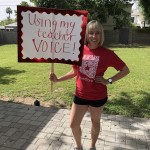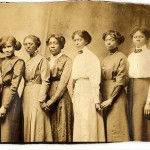“I’d like to observe your 90-minute reading block if that works for you,” says my principal as we are setting a date for my formal observation.
“Well, we’ll be using literacy skills to close read and annotate a piece of text and a critically viewing a painting to develop, discuss and write opinions supported with visual and text-based evidence,” I answer.
“I know. But is that reading, writing, or social studies?” she asks.
Deep breath…
I know how we got here, and I’m sick to death of it. I’m tired of Henry Ford’s assembly line model still being utilized in many of today’s schools. Ford broke down the complex task of building a complete car into mini tasks and created the production line. After the success of his model became apparent, schools were modeled after assembly lines. Learning was separated, isolated, and compartmentalized. The teacher became the factory line worker and the students became the tasks. The line worker did their small part with each task and then moved them on to the next isolated factory worker, and on and on until the product was deemed finished and left the factory.
As if that wasn’t enough to discourage a well-rounded education for our students, the No Child Left Behind era charged in, waving the banner of reading and math tests with high proficiency levels. Deep instruction of other subjects became an afterthought. It wasn’t like we did it intentionally. There was just so much pressure and demand from higher up to raise math and reading test scores or our schools were threatened with dire consequences.
But there is hope. The Every Student Succeeds Act (ESSA), passed by Congress in December, has the potential to end the compartmentalized, factory model forever. There are no references to “core academic subjects” (touted frequently in NCLB) in the text of ESSA. Instead, there are references to a “well-rounded education” (24, in fact!) including science, civics, foreign language, geography, and gasp… even music, art, and physical education!
I don’t want my students to see my role as a factory assembly line worker, responsible for doing my small job and then sending them along. I want them to see me as a participant and collaborator as we build knowledge together. I want my students to gain knowledge that isn’t packaged into bite-sized pieces called the “90-minute reading block.”
Sometimes the thing that we need most in the world is the thing we do least in schools – communication. Communication is not a task that can be created with an assembly line. If reading and writing “float on a sea of talk,” students may be running onto dry ground in our schools. Depending on the socio-economic level of the school, teacher talk dominated between 55% and 85% of all classroom talking. Classroom talk in many of today’s classrooms is used to check comprehension rather than to deepen learning or promote critical thinking. Our students need to learn to communicate across boundaries with a variety of purposes in many settings.
I responded to my principal, “It’s reading, writing, speaking, listening and social studies. What do you think?”
By the way, did you know ESSA does not require states to use student’ standardized test scores in teacher evaluations?
Go to http://www.azed.gov/essa/draftplan/ to see Arizona’s first draft of ESSA implementation. The second draft and round of public commenting period should be coming soon.










Comments 3
Beth this is such a true testament to what it means to educate a whole child. I really appreciate you sticking to what is best for your kids, at that time, and defending your practice so eloquently. ESSA is confusing and daunting to many educators. The more we dialogue about it and the impact it will have on schools, the stringer and more knowledgeable we will be as a profession. You practice is authentic and your dedication reflects what is best for students!
“I don’t want my students to see my role as a factory assembly line worker, responsible for doing my small job and then sending them along. I want them to see me as a participant and collaborator as we build knowledge together” Standing Ovation Beth. I am right with you. We have to never stop speaking out and helping others understand that our classrooms are not factory assembly lines. I love this line from a 2014 New York Post article “We created an assembly-line system meant to churn out assembly-line workers, writes law professor Glenn Reynolds in his book “The New School: How the Information Age Will Save American Education from Itself” (Encounter Books). The bell rings, you move to where the schedule puts you, the bell rings again, you do as you’re told..”
https://uploads.disquscdn.com/images/b902985c752b40f52c00f8d8d8ad3f7bc46e7d9e22428b6e0422aa381d814f8b.png
Keep fighting the good fight Beth
So true about the analogy of the 90-minute reading block and Ford’s assembly line! How do we instill the love of reading when it’s broken down to be scientific?